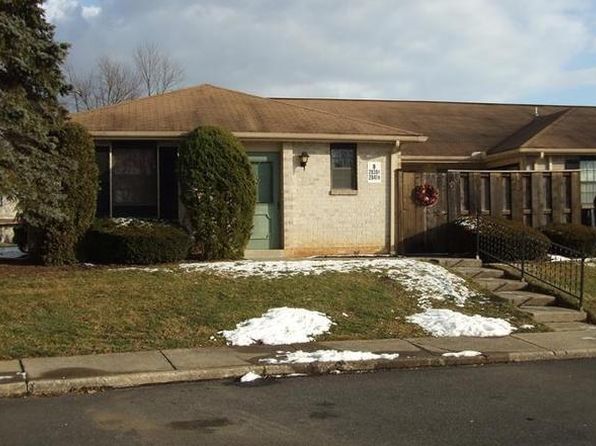Table of Content
Christina Heiser is a New York City-based content marketer and freelance writer. She covers beauty, health, nutrition, fitness, and parenting for a variety of online and print publications. Her work regularly appears on websites including NBC News and A Sweat Life. Over her decade-long career, she's also held editorial positions at Everyday Health and Women's Health.
After passing the exam, HHAs can contact a registry to prove and record the certification with the US Department of Health and Human Services. Then, you’ll be able to use this certification on your resume and for job applications. Home health aides enter a patient’s home to assist with daily living, general housekeeping, and companionship. They might help with buying groceries, planning meals, picking up prescriptions, bathing, and grooming.
Local Health Services/Offices
According to the Bureau of Labor and Statistics, the 2021 median pay for a home health aide was $14.07 per hour or $29,260 per year. Here, pointers on getting trained and certified as well as what you can expect to be paid for your services. Would you also like to be part of a highly motivated team of well-trained employees who use all their experience and expertise to sustainably improve processes for customers? If you are ready to set new benchmarks and reach new horizons, we look forward to receiving your application. With our audits, we create more security and higher process quality across all industries.
Even if you need additional certification (which typically isn’t required) it’s still possible to get that after working as a HHA for 12 months in lieu of taking class time off work. Are employed in a variety of settings including nursing homes, assisted-living facilities, retirement communities, hospitals and more. The duties of this position vary depending on the needs of patients and what they need assistance with at any given time. Medical terminology and the fundamentals of healthcare To move further, you must first grasp the basics of what you’re doing, and you’ll study those in your training program. Hospice and accredited home health care agencies are the most likely to invest in home health aide training for their employees to hone their skills. According to statistics from May 2020, the average yearly wage was $27,080.
Office of State Public Health Laboratory Director
Unlike a sterile hospital environment where people constantly come and go, home health aides get the continuity of working with the same patients over a long period, she says. You get to know their habits and routine, and you also develop close bonds. The Federal Employment Agency is the point of contact for people and companies on all questions concerning the labour and vocational training market. One of the tasks of the BA is to help people find training posts or employment. Professional qualifications are the intellectual and social skills required to exercise a given profession. Our experts will support you with questions regarding job search, visa, recognition and learning German.
Additionally, you may also document and evaluate nursing measures, as well as carry out medical instructions and assist with medical interventions. However, that will depend on your individual specialisation and qualification. While being a member of nursing staff, you are a competent contact person for members of the patient’s family. The amount of time it takes to become a home health aide varies by state. However, on average, expect to spend at least 14 weeks in training as you work toward your required hours and clinical experience. There are many ways to shape your journey as an aspiring RN from universities with prestigious nursing schools, online programs, and community colleges.
What Is Covered in the Education of a Home Health Aide?
Many home health aide jobs offer a salary per hour, so increasing their hourly rate will also increase their annual income because they’ll be working for more days in the year as well. You can take Home Health Aide classes at community colleges, nursing schools, technical or vocational schools, and even online. He explained everything in a very clear/logical way and answered all of my questions. After providing all the information to obtain general liability insurance, Jose sent me the declaration page of the insurance for review.
HHAs often get this coverage if they store sensitive patient data on a device that’s connected to the internet. Average pay in 2020 was $28,060 per year ($13.49 per hour) for Home Health and Personal Care Aides, according to the BLS. However, average annual salaries vary depending on the state, city, or region where you work. Given how closely and frequently HHAs work with a patient, you may be the first person to notice a change in their health and wellbeing. You will be responsible for documenting these changes and notifying their family, doctor, or nurse as needed.
Simplifying taxes: What senior caregivers need to know about the payroll and tax process
HHAs may also be responsible for shopping for groceries and preparing and serving meals. Federal guidelines mandate home health aides receive a minimum of 75 hours of classroom instruction. Most HHA classes meet for a few hours each day or each week, so it could take you anywhere from a few weeks to a few months to complete an in-person course. If you’re ready to become an HHA, there are plenty of home health aide classes you can take online to help prepare you for certification and licensure in your state. The NAHC offers a Certified Home Care and Executive certification for individuals who work in leadership positions at HHA agencies.

If this is something you’re interested in, you could discuss this with any of your current clients that you want to continue working with. You can pursue additional training and certifications while working for an HHA agency. According to the Bureau of Labor and Statistics, the future job outlook for certified home health aides is excellent and will continue to grow. The projected percent change in employment from 2020 to 2030 was 33%, which is considered much faster than the average for all occupations. In addition to being tested on your knowledge, you also have to demonstrate what you’ve learned.
Taking classes at a community college, for example, will be cheaper than signing up for a course at a larger university. It offers a self-guided certification course that can be completed in two days online. It’s ideal for new caregivers, experienced caregivers, self-employed caregivers, caregivers who want to start their own businesses, and more.
However, it is important to note that, unlike home health aides, they must complete a postsecondary program and pass a certification exam before they can work. A slightly higher-level nursing option is a job as a licensed practical or vocational nurse (LPN/LVN). They focus more specifically on clinical care; they consult with patients, monitor their health status and report back to registered nurses and doctors. Like CNAs, LPNs and LVNs need to get a certificate or diploma and pass a licensure exam. If you work for an agency that is funded by Medicare or Medicaid, you must meet minimum standards of training prior to being hired. Also, many states have their own requirements and regulations regarding training for employment in the field, especially if the agency you plan to work for is a certified home health or hospice agency.

























